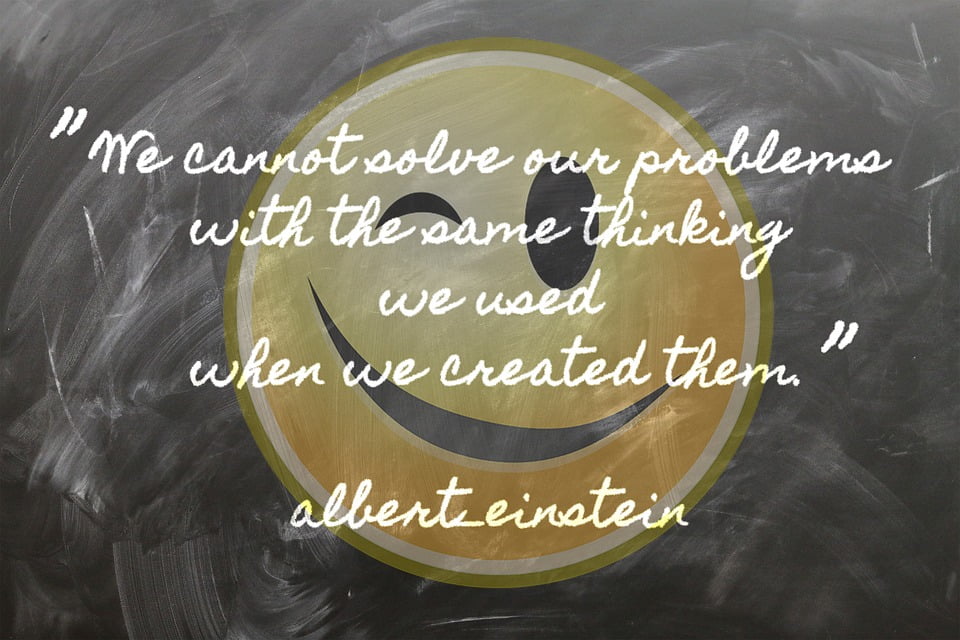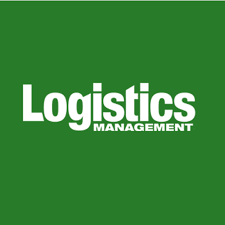Get Lean! (A Remedy to Crises?)
While many of us are thinking about “losing a few pounds”, that is not the focus of this article. It’s about reducing “waste”, not “waist”. The topic is “Lean” as it applies to efficiency and effectiveness of organizations. Just as being lean is healthy for people, being Lean is healthy for organizations, including businesses, government, schools and not-for-profit institutions.
The Wikipedia definition of “Lean” (in this context) is: a production practice that considers the expenditure of resources for any goal other than the creation of value for an end customer to be wasteful, and thus a target for elimination. Resources include money, people’s time, facilities, machines, materials and finished goods. It also includes non-tangible resources that have costs associated with producing (or acquiring) and maintaining (such as services, information, procedures, websites etc.) In applying this definition strictly, Lean experts estimate that over 90% of resource utilization in most organizations is waste and a target of elimination. Even the best organization can’t reduce waste to 0%. All have opportunity to eliminate more until perfection is reached, which hasn’t happened yet.
While there are many valuable principles and methods used in “Lean” operations (some of which take months to learn and a lifetime to master), the principle of aligning everyone in an organization behind never-ending waste elimination is at once simple and powerful. Businesses that saw the competitive advantages were the first adopters; however, educational institutions and government can also improve their performance significantly. The principle is as effective in streamlining “production” of a service as it is in manufacturing products.
“Thinking and Acting Lean” means looking at all recurring work-tasks and eliminating as many as possible that don’t add value to the end customer. Your “customer” is whoever is paying for your product or service (or you have volunteered to serve). You will find some activities that don’t serve an end-customer can’t be eliminated because of unchangeable laws of man or physics. In these cases, find the “least-waste way” through creative problem solving.
An Illustrative Example (A tragic comedy)
Let’s look at a small example in how NY State could “Think and Act Lean”. Multiply this by millions of interactions with NYS and you’ll start to see the problem (or opportunity) in just one part of the public sector.
My business partner and I recently formed a Limited Liability Corporation using an online legal service to file documents. The legal service advised us of one thing we needed to do since we have the disadvantage of forming our LLC in NY State: Publish a notice of the LLC formation in 2 newspapers. We were advised to contact our County Clerk’s office to learn details.
Now let’s see if you are a Lean thinker. Estimate the amount of waste that follows. Express your answer in a % of the activity and expenditures that are waste. Let’s assume that as a taxpayer and someone forming a business in NY State, I am a “customer” of this process.
- I search the County’s website for information on LLC formation, notification or publication. Nothing found. I look for a phone number to call. Nada. I find a general number in the phone book.
- After my call is transferred around the Clerk’s office, I eventually get to someone who understands the question. I am told I must publish in 2 of 8 newspapers approved for my County. I ask if the names and numbers of the publishers are on the internet or if she can email them to me. Nope. She has to read the names of the papers and their phone numbers to me over the phone. No other guidance given.
- I call each of the publishers and find the rates vary quite a bit. Most charge by the number of words, so I must send a draft and request a quote. In calling one phone number provided by the County Clerk’s office, I reach someone who tells me they publish several newspapers. She didn’t know which are acceptable by the County but she could publish my notice in any or all of them.
- At one newspaper, a kind woman advises me that the State requires the notice to be published once a week for six weeks each: in one daily paper and in one weeklypaper. She learned this in talking to a distressed woman who published her LLC in 2weekly-published papers and NY State did not accept it. After a few days of getting clarity from the Office of the NY Secretary of State, I find out she was correct.
- I discover a website, NYLovesSmallBiz.com. A few links looked promising but they took me to a “Page Not Found” message. Where’s the love?
- I check on what it would take to have someone handle the notifications for me; $400 is the quote for my County. Good thing I am not downstate where the cost is triplethat. OK, it looks like I can do this myself for $200, so I keep trudging along. I read the rules, look at examples and learn that common practice is to abbreviate everything so that it is so cryptic few people would understand it (although it keeps the cost down). One requirement is to state the purpose of the LLC. I follow the examples: “Purpose is Any Legal Activity”. This requirement deters people involved in illegal activity, but don’t want to lie.
- Now don’t confuse these LLC notices with local newspaper’s reporting of new businesses based on public records. Those include useful information such as who is the owner. Instead, the LLC notices must include content such as “Secretary of New York State is designated as agent of LLC upon whom process against it may be served”. No matter how much you abbreviate, this line is going to cost you.
- After the 6 weeks of my notice appearing in papers that no one I know reads, I sent Affidavits of Publication from the papers to the state. The fee for filing is $50 (apparently the $200 NYS LLC filing fee doesn’t cover transactions that get this far.)
Did you pass the first test?
How much of the above was waste if the small business person and taxpayer is the “customer”? If you answered 100% waste, you are correct. And this is only the obvious waste in one transaction. How many resources were used making the rules and procedures for this “requirement”, that other states don’t see a need for?
Let’s look deeper … there must be SOME value here!
We have to consider other “customers” of NY State public servants. They need to make sure that the general public is aware of LLC formations. Let’s see how “Lean” the process is that serves them.
The information is already on the NY Department of State website in a searchable “Corporation and Business Entity Data Base”. And it’s for all counties! Why isn’t this sufficient, if not far more convenient, for the interested public? The alternative is to regularly buy, or “pick up” in the case of the free ad-intensive papers, all of the publications. One would first have to run the gauntlet to learn which publications are approved for EACH county they are interested in. But who would actually go through all that?
There must be some other purpose for the notifications. Ah-ha! It must be to provide the information that isn’t available in the searchable data base. Besides the unique data for the LLC, the notifications state that the LLC is for a “legal activity” and “the Secretary of New York State is designated as agent”…yada, yada, yada.
But Seriously
Okay, I am getting facetious and I picked an organization with a lot of opportunity to reduce waste. You may be thinking, “Let’s not worry about this small waste that only affects unfortunate people who want to start a business in New York. What about the bazillion dollars we spend on [insert your pet-peeve pork project here]?”
The point is, in order to be competitive, an organization needs pervasive Lean thinking in all decisions that use resources. It must be part of everyone’s job starting at the top. The result is a healthy, competitive, value-add organization – something all organizations should aspire for, including government.
Call to Action
Where can we use the thinking and discipline used by world-class, agile organizations? How about:
- Make New York State a place where businesses can compete and create jobs?
- Stem the ever-rising costs of college education that consistently outpaces the rate of inflation?
- Reduce the cost of health care?
- Move to the next level of performance in your organization?
Some tips for Thinking and Acting Lean:
- Make sure you know who the customers are for each process or work activity and what they really need. Sometimes there are multiple customers, but don’t make it too complicated. What primary customers are paying for a particular process or activity? In my example above, it appears that only lawyers and newspapers are benefiting from this NYS requirement. They certainly are NOT primary customers of forming a business.
- Learn about Lean principles and techniques such as: the “seven wastes“, value streams, Kaizen, the Plan-do-check-act cycle and many best practices for eliminating waste and increasing speed. Although Lean started in manufacturing, businesses are increasingly embracing it to reduce costs of services and essential business support. There are great books and many experts that can help start a Lean Journey.
- Keep asking “why” non-customer focused activities that consume resources are needed! If you hear “because we always did it that way”, “because we have to” or some legalistic mumbo jumbo, you are probably onto an opportunity to bust some bureaucracy.
- Engage customers and suppliers and most importantly, people who do the work, in order to “lean out” processes. Unleash them to creatively find the “least-waste way”. It will reduce costs and increase speed, as well as improve customer and employee satisfaction. No one likes to pay for OR perform wasteful tasks.
- Most importantly, make sure the right incentives are in place. Are the high costs of doing business in New York and the continually escalating costs of higher education primarily due to misaligned incentives and unclear accountability to make the best use of resources? Aligning everyone in an organization behind clear objectives is the starting point for a Lean transformation.
Be Part of the Solution!
For the majority who want to make a positive impact, I present a challenge and a path for improving the health of organizations you are part of OR can influence. This includes public services that we all pay for.
Develop “eyes for waste” and skills for eliminating. Hold people accountable for minimizing waste. Be a Lean advocate and change-agent. Besides thinking “lean”, think positively. View each discovery of waste as an opportunity to improve rather than to pin blame. Get started on a Lean journey and don’t look back. Be part of the solution to some of the crises facing theU.S. today.
Jerry is a change-agent with a track record of driving performance excellence in a variety of organizations and sustainable improvements in end-to-end business processes. After a 30+ year career leading and facilitating continuous improvement in a global corporation, he co-founded Performance Results, LLC in 2009 to help businesses and non-profit organizations accelerate their operational excellence journey. Jerry and his wife, Nancy, are proud parents of 4 children and reside in a suburb of Rochester, New York.
Contact him at JR@perform-results.com
LinkedIn Profile: www.linkedin.com/in/jerryrunser








